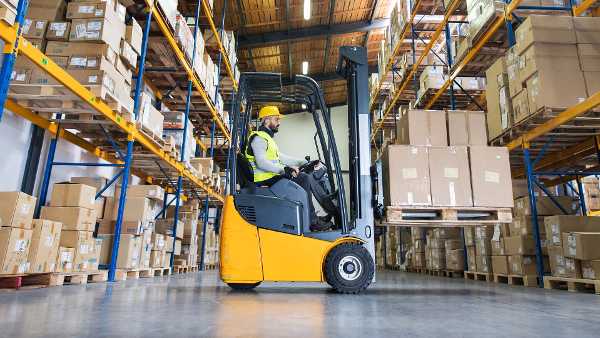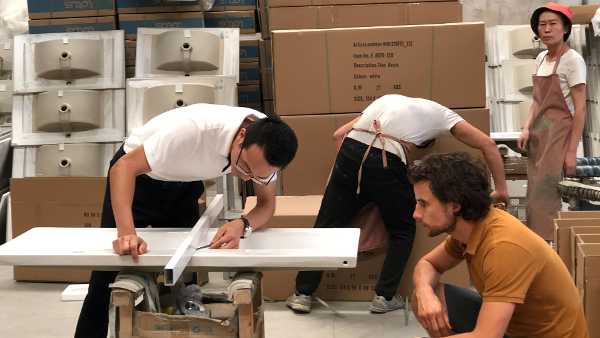Too many dangerous products on the market: “GPSR badly needed”

- Marcel Hoebink
- Background
- 17 December 2024
- Edited 23 October 2025
- 5 min
- Managing and growing
- International, Rules and laws
Products that people use every day at home need to be safe. Nobody wants a cream that causes a rash or a bicycle that breaks in half. As an importer, you do not want to put dangerous products on the market, but it happens a lot. The new General Product Safety Regulation (GPSR) will help change that.
Many unsafe products
It is high time that product safety was taken more seriously according to the Netherlands Food and Consumer Product Safety Authority (NVWA). “The rules that have just taken turn the world upside down for some importers,” says Martijn Duinkerke, who works on general product safety at the NVWA. Almost every week you hear news about dangerous products. Think of cargo bikes breaking or batteries catching fire. Partly due to the large number of online suppliers, the number of unsafe products has increased. Customs officers are nearly overwhelmed by the number of foreign packages that need to be checked. And so products that do not meet safety requirements regularly enter the market.
The Consumentenbond (Consumers' Association) has seen “a flood of unsafe products” for some time now. Spokesperson Gerard Spierenburg cites some examples: “Loose parts and toxic substances in toys, overheating and fire hazards in electronics, heavy metals in jewellery, and unsafe cosmetics.” Chinese suppliers are the worst offenders, according to Spierenburg. “Products from China more often cause problems.”
"Importers do not know the rules"
Most entrepreneurs who import products act in good faith, says Duinkerke. But they often lack knowledge. “They do not know the rules, so they do not know what they are doing wrong.”
To change this, regulator NVWA wants to raise its profile. To make importers more aware and help them take action and responsibility themselves. Dunkirk: “The time for playing is over. The homework for manufacturers and importers is increasing. This is badly needed for consumer safety.”
New rules: GPSR
The new General Product Safety (GPSR) should protect consumers from dangerous products. Do you sell a product made in an EU country? Then you are a distributor, and it is not so complicated, according to Duinkerke. “Then the manufacturer is responsible for a safe product, produced according to the European directives.” As a , you check the manufacturer and take action if a product is nonetheless unsafe.
Do you import products from outside the EU? Then the new rules give you more responsibility. The same applies to manufacturers. Duinkerke: “As the European regulator, we cannot check the manufacturer in China. Under the GPSR, there must be a responsible person in the EU for every product. This can be an authorised representative on behalf of the manufacturer. Is there no responsible person? Then you as the are responsible.”
Products with their own EU rules
Some products, such as cosmetics and toys, already have their own European safety rules. These products are listed in Annex I of Regulation (EU) . The GPSR only applies in addition to these rules.
Product safety in 8 steps
As an importer, you comply with the new GPSR standard by following these 8 steps:
- Check Safety for banned products.
- Find out what rules there are for your product.
- whether your product complies with these rules.
- Put your contact details on the product or packaging. That way, customers and regulators can reach you.
- Investigate complaints and keep records.
- Arrange for safe transport and storage.
- Create a technical and a declaration of . Keep your records for 10 years.
- Take action if your product does not comply.
Safe import products: 'Accidents will happen'
Marketing standard products
What changes if you import fully finished standard products? Such as phone cases or bedding. Jasper Delisse’s company We R Asia helps importers. He lists 3 new tasks: “You must put your contact details on the packaging, you must give your customer clear instructions and safety information, and you must make sure you keep the necessary technical .”
Risk assessment for each product
A big change for importers is that a risk assessment is now required for every product. “This means you must have a technical report even for a simple pen,” says Duinkerke. “And make sure you have that before you pay, and the product is loaded onto a boat in China. Otherwise, you depend on whether your supplier will cooperate.”
That risk assessment should show how long a product is usable. And that a product is safe for people during its lifetime. Safe is a broad term here, Duinkerke explains: “It's not that a dangerous product should never be used. In such a case, you explain the risks to the user. Think of a drill. The rapidly rotating parts can create a dangerous situation. But under the right conditions, you can use the drill safely.”
Get a technical report before you pay, and your product is loaded onto a boat in China.
Assessing risks
Delisse wonders how far entrepreneurs will be willing to go for absolute security. “I applaud more security, but I do not believe that every website owner will have a risk assessment report made for each different mobile phone case, for example.”
Delisse therefore expects it to make a difference to which products you import and sell. “Look, if you sell products for babies, you want to be sure that no harmful substances are used. And that parts do not just come off. But there is a large category of products that carry fewer risks.”
The owner of We R Asia thinks importers will make their own trade-offs. “Engaging an agency is not mandatory. You can also find out and arrange things yourself. However, you should be aware of the risks you are taking.” Delisse is referring to liability and damage to your reputation. As well as fines, recalls, and high costs recovered from the importer if they do not have product safety in order.
EU authorised representative
KVK adviser Jacob van der Vis regularly receives questions about the new rules. “Recently from someone who imports 25,000 different products. So where do you start? Fortunately, an EU authorised representative had already been appointed for many items. That is something to watch out for though: does my manufacturer have an authorised representative in the EU? Then you have less to arrange and fewer responsibilities. That makes things much easier.”
A question that remains is how to deal with recalls. “For that, you need to know your customers and draw up a plan. And of course, this includes costs you had not expected.”
Marketing your own brand
Do you have products made abroad and market them in Europe with your own brand name or logo? Then the new GPSR rules may have a big impact. This is because you will then be seen as a manufacturer. And this means even more responsibilities for a safe product. Experienced importers do adapt to the new rules, according to Delisse. “Although those rules certainly require more in-depth knowledge of the subject.”
Technical report
Service providers are responding to the new legislation. An online technical file, with all product legislation and standards sorted out for you, is available for less than €150 per product, says Duinkerke. Other providers work with subscriptions.
It is a big task for starting entrepreneurs. “It is a whole set of requirements you must meet,” says Delisse. “Finding your way is difficult. Especially when you still have to build up your business and are importing for the first time. Then you already have so much to arrange.”
Wholesale as an intermediate step
Delisse thinks all the rules and responsibilities are causing a shift. “I would advise starters to first take an intermediate step. Start your business, buy from a wholesaler in the EU and build up your business first. Sure, your margins will be smaller, but once you are up and running you can always start importing yourself.”
According to KVK adviser Jacob van der Vis, those who want to launch their own-brand line should look into it carefully. “If you follow the rules, you need a risk assessment, for example. Go and look for such a report and think about what it should look like for your product.”
A consultant is not always necessary, says Van der Vis, “But do think carefully about your product. Sometimes there are few risks at first glance, but in practice that may be different. With textiles, for example, you can think about how flammable an item is, or what chemicals have been used in production. When there are risks associated with your product, a consultant can certainly help.”
It's a whole set of requirements you must meet. Finding your way is difficult.
Cost of advice
You pay for guidance and advice on procurement. “Roughly 10% to 30% over the purchase value of your product,” explains Delisse. The cost depends on the amount of work and the purchase value of the products. “That's not nothing, of course,” admits Delisse, “but you also gain a lot. You outsource work, you have security. If all goes well, hiring a consultant largely pays for itself.”


